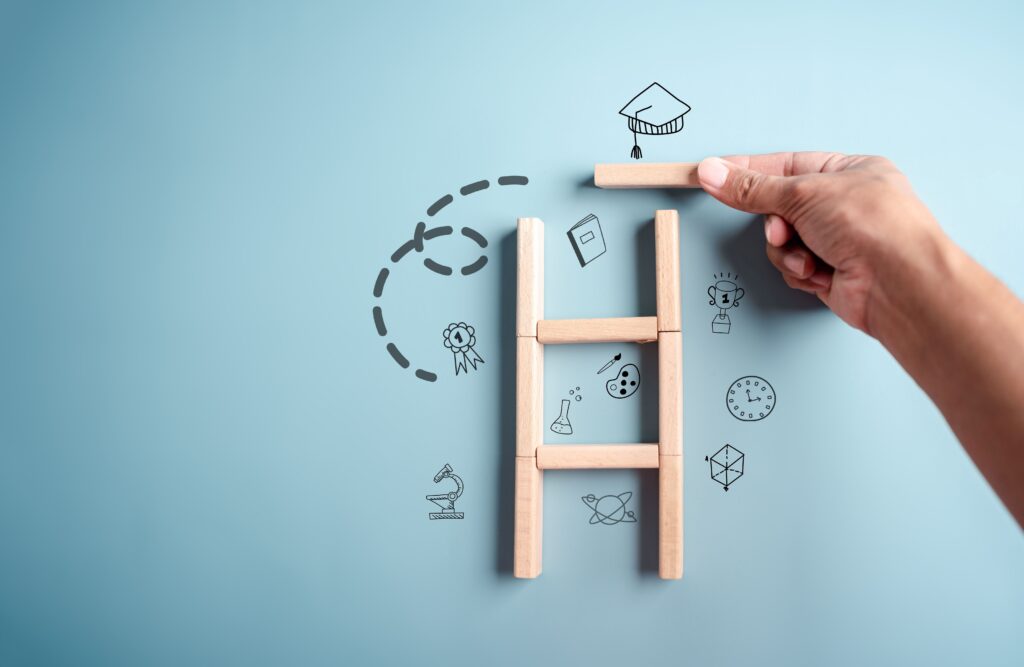What is a Growth Mindset? Cultivating Learning and Resilience in K-12 Education
Imagine a classroom where students eagerly tackle new challenges, viewing mistakes not as failures, but as invaluable stepping stones toward mastery.
Picture a faculty meeting where educators openly share professional development goals, confident in their collective capacity to grow and adapt. This isn’t just an idealistic vision; it’s the tangible outcome of fostering a growth mindset—a paradigm shift that can redefine the landscape of K-12 education.
For years, many of us educators, perhaps unknowingly, operated under the premise of a “fixed mindset.” We might have heard or even used phrases like, “I’m just not good at math,” or “Some kids are simply naturally gifted writers.”
These seemingly innocuous statements, however, subtly reinforce the belief that our intelligence, talents, and abilities are static, unchangeable traits. But what if the very foundation of our learning and teaching could be revolutionized by a different understanding?
Unpacking the Growth Mindset: A Foundation for Educational Excellence
At its core, a growth mindset is the belief that one’s abilities and intelligence can be developed through dedication, hard work, and effective strategies.
Pioneered by renowned Stanford psychologist Carol Dweck, this concept challenges the notion of inherent limitations, asserting instead that our brains are like muscles—the more we exercise them, the stronger and more capable they become.
For educators grappling with what is a growth mindset in practical terms, it’s about shifting the focus from innate talent to effort and strategy.
In the context of a K-12 environment, this means:
- For Students: Understanding that academic struggles are opportunities for growth, not indicators of a fixed ceiling. It encourages perseverance, problem-solving, and a love for learning.
- For Teachers: Embracing professional development, experimenting with new pedagogical approaches, and viewing student challenges as puzzles to solve with differentiated instruction, rather than insurmountable barriers.
- For Administrators: Cultivating a school culture that champions continuous improvement, innovation, and provides robust support systems for both staff and students to evolve.
Why Cultivate a Growth Mindset in K-12? The Impact on Learning and Teaching
The benefits of integrating a growth mindset into our educational practices are profound and far-reaching. When educators and students alike adopt this perspective, we observe significant positive shifts: Understanding what is a growth mindset truly entails unlocks these powerful advantages.
Increased Resilience and Perseverance
Students with a growth mindset are less likely to give up when faced with difficult tasks. They see effort as the path to mastery, not a sign of inadequacy. This resilience is a critical life skill, extending far beyond the classroom.
Enhanced Motivation and Engagement
When learners believe their intelligence can grow, they are more motivated to engage with challenging material. The focus shifts from merely achieving grades to genuinely understanding and developing competence.
Improved Academic Performance
Research consistently shows a correlation between a growth mindset and higher academic achievement. Students become active participants in their learning journey, leading to deeper understanding and better outcomes.
Fostering a Positive Classroom and School Culture
A growth mindset promotes a supportive environment where collaboration thrives, feedback is welcomed, and mistakes are seen as learning opportunities for everyone. This reduces fear of failure and encourages risk-taking.
Empowering Educators
For teachers, adopting a growth mindset means continuously refining instructional strategies, embracing new technologies, and seeking collaborative opportunities to enhance their craft. It empowers us to view every student as capable of significant progress.
Practical Insights: Nurturing a Growth Mindset in Your School
Implementing a growth mindset isn’t a one-time workshop; it’s an ongoing journey requiring intentional effort from all stakeholders. For those continuously asking themselves, “what is a growth mindset and how do I apply it?”, here are practical steps K-12 administrators and teachers can take:
- Shift Your Language:
- Praise Effort and Strategy, Not Just Intelligence: Instead of “You’re so smart!”, try “I really admire how you persevered through that challenging problem. What strategies did you use?” This emphasizes the process of learning.
- Reframe Mistakes as Learning Opportunities: Use phrases like “What can we learn from this?” or “Mistakes are proof that you are trying.”
- Emphasize “Yet”: When a student says, “I can’t do this,” respond with, “You can’t do it yet.” This simple word implies future potential.
- Teach About the Brain:
- Educate students on neuroplasticity—the brain’s ability to grow and change. Understanding that their brains literally get stronger with effort can be incredibly empowering and neurons. This directly relates to the core idea of what is a growth mindset.
- Provide Constructive Feedback:
- Focus feedback on specific actions and strategies rather than on fixed traits. Help students understand how to improve, not just what they got wrong.
- Promote Challenging Tasks:
- Encourage students to step out of their comfort zones. Celebrate the struggle and the process of tackling difficult material. Avoid over-praising easy successes.
- Model a Growth Mindset:
- As educators, we must embody what we preach. Share your own learning struggles, how you overcame them, and your commitment to continuous improvement. Let students see you embrace new challenges and learn from your own mistakes. This demonstrates what is a growth mindset in action.
- Foster a Culture of Collaboration:
- Create opportunities for students to learn from each other, realizing that collective effort often leads to greater understanding. This reinforces the idea that learning is a shared journey, not an isolated endeavor.
- Embrace Reflection:
- Encourage regular reflection on learning processes. Ask students: “What did you learn today?” “What strategies worked well?” “What will you try differently next time?”
By intentionally integrating the principles of a growth mindset into every facet of our K-12 institutions, we are not just teaching subjects; we are cultivating resilient, lifelong learners who are equipped to thrive in an ever-changing world. Let’s empower every student and every colleague to unlock their full potential, one challenge and one triumph at a time.
You’ve got important career goals — we have the graduate program to get you there. Check out our available reading/literacy graduate degree programs to advance your career today!




